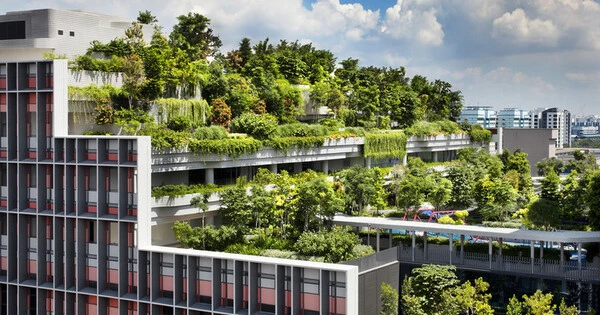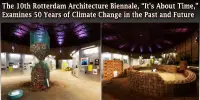Researchers have identified the barriers to greener construction and offered practical incentives that local governments can offer to encourage private green real estate development. The study also examines key stakeholders and the building life-cycle process in order to identify ways to reduce the industry’s overall carbon footprint. They write that change is desperately needed.
Even as more city governments and home buyers push for more sustainable new homes and buildings, the construction industry’s green pivot faces a number of challenges. The industry’s natural cautious approach to innovation, as well as its dominant profit models, which favor previously profitable habits and techniques, are among the barriers to greener construction.
Three Concordia researchers from the Next-Generation Cities Institute (NGCI) outline those barriers and offer practical incentives local governments can offer to encourage private green real estate development in a new paper published in the journal Sustainability.
The study also examines key stakeholders and the building life-cycle process in order to identify ways to reduce the industry’s overall carbon footprint. Construction and the built environment account for 38% of global greenhouse gas emissions, according to the Global Alliance for Buildings and Construction and the United Nations Environment Program.
I quickly realized as a board member of the Montreal Climate Partnership that developers have no idea how to become climate neutral. They lacked expertise and knowledge, and the current business models do not work.
Natalie Voland
The study stands apart from other academic papers examining the construction industry. Its lead author, Ph.D. student Natalie Voland, is president of Montreal-based real estate developer Gestion Immobiliere Quo Vadis and co-director of Concordia’s recently announced zero-carbon buildings accelerator. The paper relies largely on Voland’s own experiences operating a certified B-Corp, part of an international movement that emphasizes sustainability through business.
“I quickly realized as a board member of the Montreal Climate Partnership that developers have no idea how to become climate neutral,” she says. “They lacked expertise and knowledge, and the current business models do not work.”
Voland believes that this study, which was co-authored by Concordia Public Scholar Mostafa Saad and NGCI co-director Ursula Eicker, can be used to demonstrate that a massive shift toward greener buildings will eventually earn developers who create new business models standard profits for their investors and finance requirements.

Sustainable precedents
The authors argue that the realities confronting developers, such as the need for quick returns on investment, stable financing, and satisfying multiple stakeholders, can be best addressed by municipal policies and incentives that combine private and public goals. Cities can use fast-track zoning, density bonuses, tax breaks, and expertise and supplier sharing to promote green projects.
“In my experience, these incentive-based types of zoning/regulatory processes were frequently blocked by city officials who claimed they would set a precedent of preferential treatment for green building projects,” Voland says. The point would be to set a precedent.
“This way, the city would be telling a developer that if they build something that benefits the environment and the community, they would get an incentive that would benefit their financial models.”
Building on experience
Eicker adds that Voland’s experience adds much-needed depth to a field that, she claims, lacks large datasets and academic literature. “It’s a real challenge to translate an individual’s experience like Natalie’s into scientific facts,” Eicker says.
“However, by transforming her empirical knowledge into a systemic form, we can substantiate parts of the existing literature, which is what makes this paper so intriguing. It is about real dynamics and how we can make long-term projects a reality. This paper functions as a map of what is currently available. We are mapping Natalie’s industry experience as well as the actual obstacles and barriers that exist” Saad adds.
“Academics, who must observe a subject from a high level, may not notice these. We need this kind of hands-on experience to gain these insights in an academic setting.”
The authors believe that the paper’s real-world applications can be used in the future to explain the value of green buildings to developers, bankers, and policymakers via their accelerator. “We’re not trying to say, ‘What’s a better building?'” Voland clarifies. “We know what a better building looks like. It’s all about how we put it into action.”
















